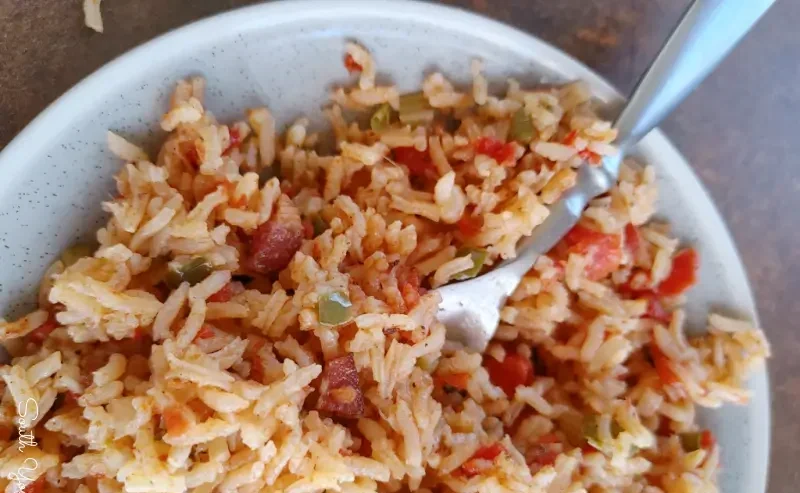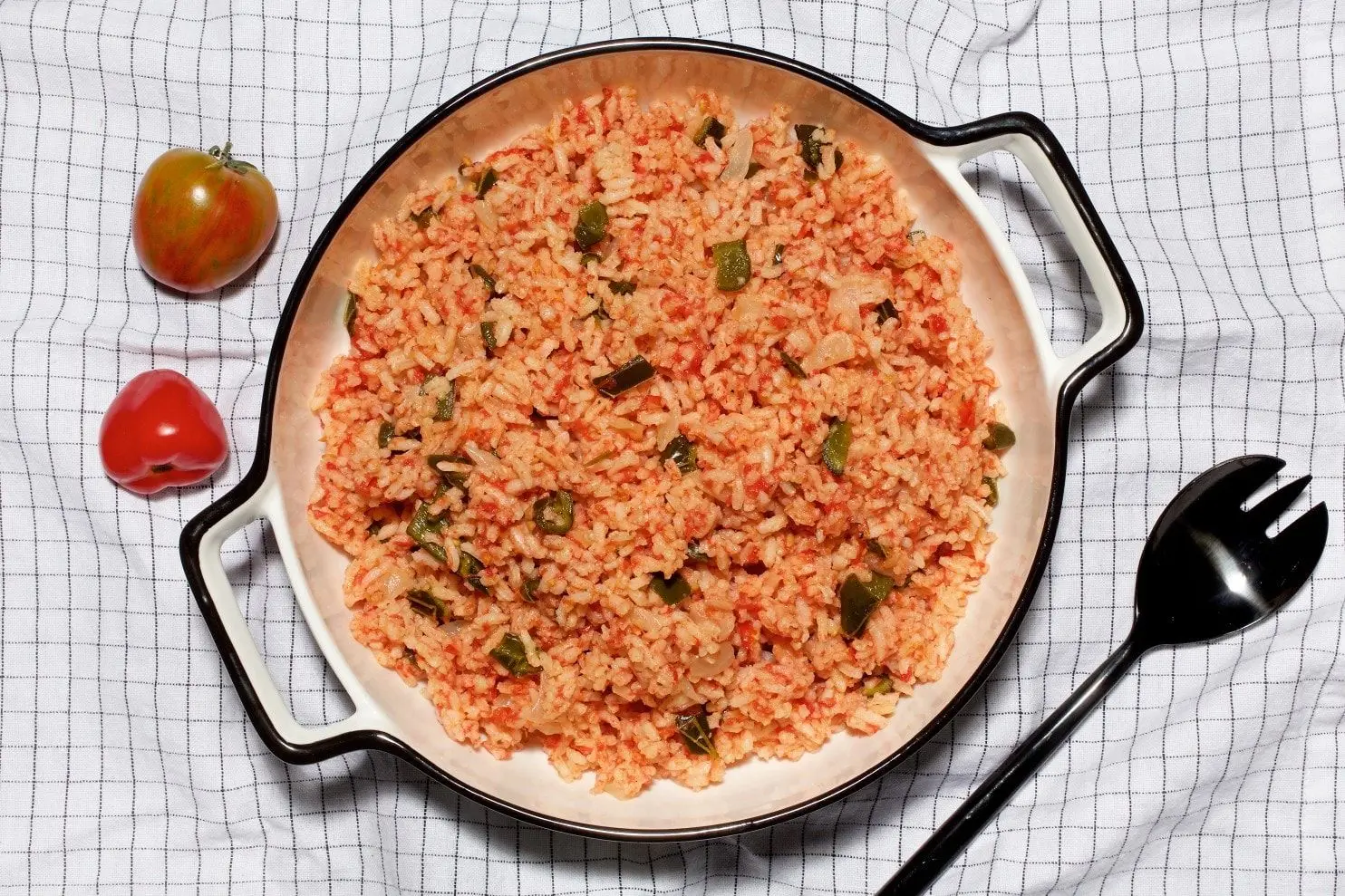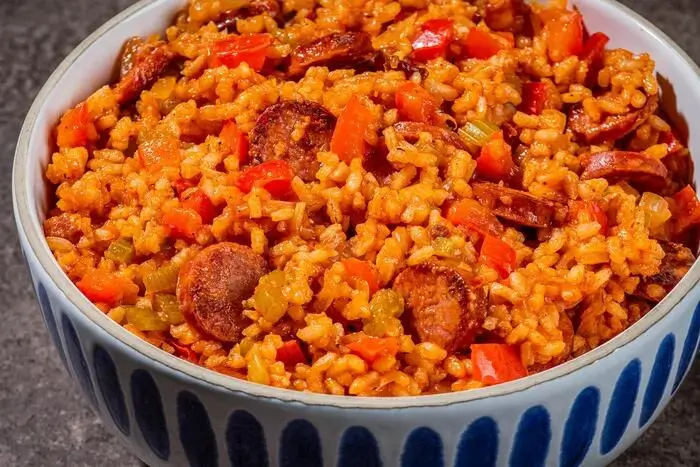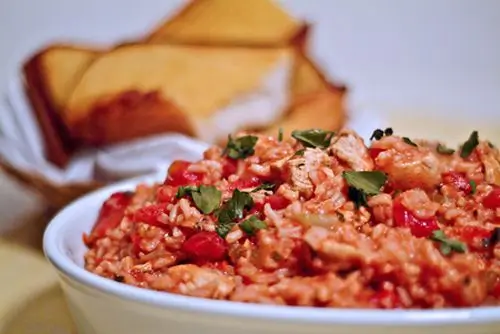Introduction
Charleston Red Rice is a beloved Southern dish that perfectly embodies the rich and flavorful traditions of Lowcountry cuisine. Known for its deep red color, savory ingredients, and warm, comforting taste, this dish has been passed down through generations in Charleston, South Carolina, and is now cherished nationwide.
In this article, we’ll dive deep into everything there is to know about Charleston Red Rice, including its history, how to make it, and why it’s become a cornerstone of Southern cooking. Whether you’re a seasoned cook looking to perfect your recipe or a first-time visitor to the world of Lowcountry food, you’re in the right place.
What Makes Charleston Red Rice Unique?
Charleston Red Rice stands out among other rice dishes for several reasons. Its vibrant color, which comes from the addition of tomatoes and sometimes bell peppers, gives it a rich, earthy appearance. The dish is traditionally made with long-grain rice, giving it a fluffy texture that complements the deep flavors from the seasonings and vegetables.
Here are some key elements that make Charleston Red Rice truly unique:
Key Ingredients:
- Tomatoes: The key ingredient that gives Charleston Red Rice its signature red color. Both fresh and canned tomatoes are commonly used.
- Long-Grain Rice: The foundation of the dish, long-grain rice keeps the texture fluffy and prevents the rice from becoming mushy.
- Bell Peppers and Onions: These vegetables contribute to the flavor profile, adding sweetness and depth.
- Seasonings: Traditional seasonings like garlic, thyme, and bay leaves infuse the rice with aromatic flavors. Cayenne pepper or hot sauce is often added for a little kick.
- Meat (optional): While the dish is often vegetarian, it is frequently made with sausage, bacon, or shrimp for added richness.

The History and Origins of Charleston Red Rice
Charleston Red Rice has deep roots in the history and culture of Charleston, South Carolina. The dish has evolved over centuries, with influences from African, Caribbean, and European culinary traditions.
African and Caribbean Influence:
Charleston Red Rice’s origins can be traced back to African slaves who brought their culinary traditions to the Lowcountry. The use of rice, a staple crop in the region, was central to the dish. The dish’s use of tomatoes and peppers reflects the influence of Caribbean cooking, where these ingredients are staples in many rice dishes.
Southern and Lowcountry Roots:
By the 19th century, Charleston Red Rice had become a popular dish in the Lowcountry region of the southeastern United States. The dish was often served at large gatherings, from family dinners to community celebrations. It was typically made with inexpensive ingredients, which made it both a comfort food and a practical choice for feeding large groups of people.
Today, Charleston Red Rice is a mainstay in Southern cooking and is often served alongside other local favorites like shrimp and grits, fried chicken, or collard greens.
How to Make Charleston Red Rice
Making Charleston Red Rice is relatively simple, but the dish requires some attention to detail to get it just right. Below is a basic recipe to get you started, as well as a few variations and tips for perfecting your version of this Southern classic.
Basic Recipe for Charleston Red Rice
Ingredients:
- 2 cups long-grain rice
- 1 can (14.5 oz) diced tomatoes, drained
- 1 bell pepper, finely chopped
- 1 medium onion, finely chopped
- 2 cloves garlic, minced
- 4 cups chicken broth (or vegetable broth for a vegetarian version)
- 2 tbsp olive oil
- 1 tsp thyme
- 1 bay leaf
- 1/2 tsp cayenne pepper (optional, adjust to taste)
- Salt and black pepper to taste
Instructions:
- Heat the olive oil in a large skillet or Dutch oven over medium heat.
- Add the onions, bell peppers, and garlic. Sauté until softened, about 5 minutes.
- Stir in the diced tomatoes, thyme, bay leaf, cayenne pepper, salt, and black pepper. Cook for 2 minutes until the flavors meld together.
- Add the rice and stir until the rice is coated with the tomato mixture.
- Pour in the chicken broth and bring to a simmer. Reduce the heat to low, cover, and cook for 20-25 minutes, or until the rice is tender and the liquid is absorbed.
- Remove from heat, discard the bay leaf, and fluff the rice with a fork before serving.
Common Variations of Charleston Red Rice
- Sausage Red Rice: For a heartier dish, add smoked sausage or Andouille sausage. Brown the sausage in the skillet before adding the vegetables.
- Shrimp Red Rice: Add cooked shrimp towards the end of cooking for a seafood twist on this classic dish.
- Vegetarian Red Rice: Skip the meat and add more vegetables like okra, zucchini, or peas to boost flavor and texture.
Tips for Perfecting Charleston Red Rice
- Use good-quality rice: Long-grain rice works best because it cooks evenly and doesn’t become too sticky.
- Layer flavors: Don’t rush the sautéing process. Cooking the vegetables and seasonings thoroughly brings out the best flavors.
- Adjust the liquid: The rice should be slightly moist but not soggy. Adjust the amount of broth if necessary.
Why Charleston Red Rice is So Popular in Lowcountry Cuisine

Charleston Red Rice holds a special place in Lowcountry cuisine for several reasons:
Versatility:
It can be served as a side dish or a main course. When paired with meats like fried chicken or shrimp, it’s a complete meal that reflects the region’s love of hearty, flavorful food.
Celebratory Nature:
Charleston Red Rice is often served at family gatherings, holiday dinners, and large community events. Its ability to feed a crowd while packing a punch in terms of flavor makes it a popular choice for special occasions.
Cultural Significance:
As a dish that has evolved over centuries, it embodies the spirit of Charleston and its diverse cultural heritage. From the African influence on the use of rice to the Southern ingredients and cooking techniques, Charleston Red Rice is a reminder of the region’s complex history.
Common Mistakes to Avoid When Making Charleston Red Rice
Making Charleston Red Rice might seem easy, but there are a few common mistakes that can affect the final result. Here’s what to avoid:
- Using the wrong rice: Stick to long-grain rice for the best texture. Short-grain or instant rice can make the dish mushy.
- Skipping the sauté step: Sautéing the vegetables and seasonings is crucial for building deep flavor.
- Overcrowding the pan: If you’re cooking a large batch, use a wider pan so the rice can cook evenly.
Charleston Red Rice vs. Other Southern Rice Dishes
Charleston Red Rice shares similarities with other Southern rice dishes like jambalaya and Spanish rice, but there are key differences:
| Dish | Main Ingredients | Key Flavor Profile | Cooking Method |
|---|---|---|---|
| Charleston Red Rice | Rice, tomatoes, bell peppers, onions, sausage (optional) | Savory, slightly spicy | Simmered with broth and vegetables |
| Jambalaya | Rice, tomatoes, sausage, shrimp, chicken | Spicy, smoky | One-pot, mixed with meats and vegetables |
| Spanish Rice | Rice, tomatoes, onions, garlic, cumin | Mildly spiced with cumin | Typically simmered with broth and spices |
Key Differences:
- Jambalaya: Heavier on meat and spices, typically more complex in flavor.
- Spanish Rice: More mild, often flavored with cumin and less spicy.
Where to Try Charleston Red Rice in Charleston, SC
If you’re visiting Charleston and want to taste authentic Charleston Red Rice, here are some top spots:
- Husk: Known for its elevated Southern dishes, Husk offers a delicious take on Charleston Red Rice.
- Poogan’s Porch: A classic Charleston restaurant with traditional Southern comfort food, including Red Rice.
- The Glass Onion: This spot offers Lowcountry cuisine with an emphasis on local ingredients and classic dishes.

Nutritional Benefits of Charleston Red Rice
While Charleston Red Rice is a rich and hearty dish, it can also be part of a balanced diet when made with wholesome ingredients. Here are some of the benefits:
- Tomatoes: Rich in antioxidants like lycopene, which can reduce the risk of chronic diseases.
- Rice: Provides a good source of energy and carbohydrates, especially when using whole grain varieties.
- Vegetables: Onions and bell peppers are high in vitamins A and C, and they contribute fiber to the dish.
Frequently Asked Questions About Charleston Red Rice
Can I make Charleston Red Rice ahead of time?
Yes, Charleston Red Rice stores well in the fridge for up to 3 days and can be reheated without losing flavor.
What can I serve with Charleston Red Rice?
It’s commonly served with shrimp, fried chicken, or collard greens for a complete Southern meal.
How spicy is Charleston Red Rice?
The level of spiciness is adjustable. Add cayenne pepper or hot sauce to suit your taste.
How to Store and Reheat Charleston Red Rice
To store, place any leftovers in an airtight container and refrigerate for up to 3 days. Reheat in a skillet over low heat with a splash of water or broth to prevent it from drying out.
Related Recipes
Conclusion
Charleston Red Rice is more than just a dish; it’s a cultural symbol of the Lowcountry. With its deep history, rich flavor, and versatility, it’s a must-try for anyone interested in Southern cuisine. Whether you’re preparing it for a family meal or experiencing it at a Charleston restaurant, this dish is sure to impress.

